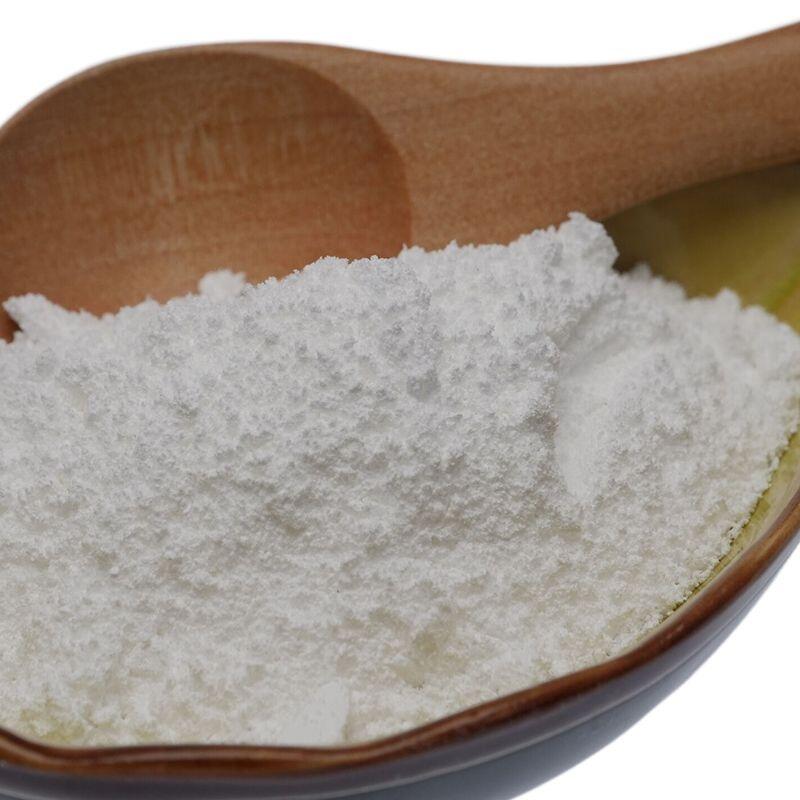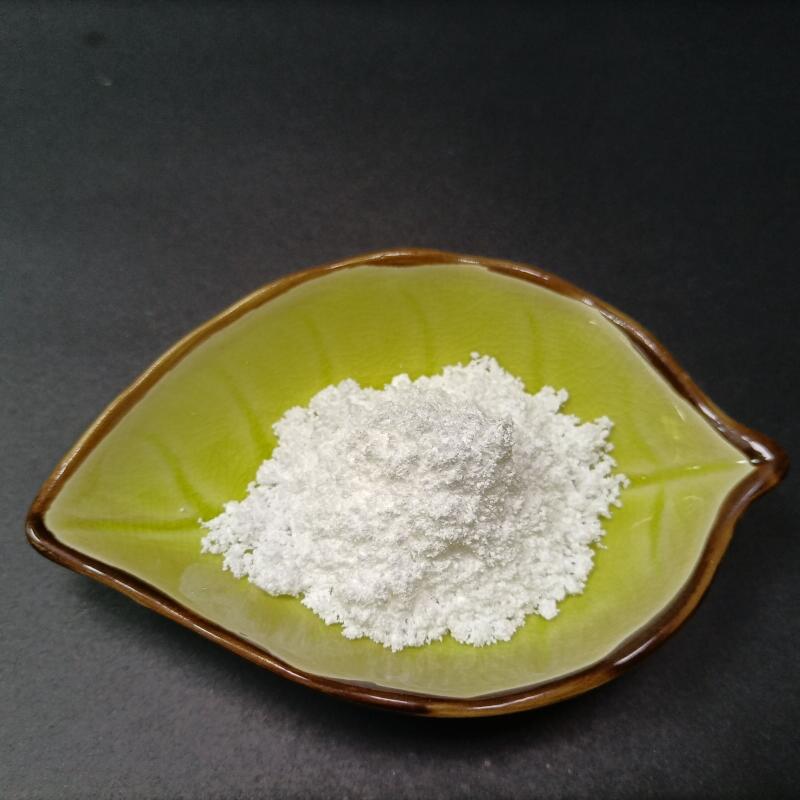-
Categories
-
Pharmaceutical Intermediates
-
Active Pharmaceutical Ingredients
-
Food Additives
- Industrial Coatings
- Agrochemicals
- Dyes and Pigments
- Surfactant
- Flavors and Fragrances
- Chemical Reagents
- Catalyst and Auxiliary
- Natural Products
- Inorganic Chemistry
-
Organic Chemistry
-
Biochemical Engineering
- Analytical Chemistry
-
Cosmetic Ingredient
- Water Treatment Chemical
-
Pharmaceutical Intermediates
Promotion
ECHEMI Mall
Wholesale
Weekly Price
Exhibition
News
-
Trade Service
Severe Acute Respiratory Syndrome Coronavirus 2 ( SARS - CoV -2 ) caused the novel coronavirus pneumonia ( Corona Virus Disease 2019 , COVID-19 ) pandemic .
Despite the resounding success in the development of a COVID-19 vaccine, the SARS-CoV-2 pandemic poses enduring challenges to human health due to frequent strain variation and low global vaccination rates, necessitating an urgent need for research and development Novel broad-spectrum therapeutics targeting mutant strains of SARS-CoV-2 .
Despite the resounding success in the development of a COVID-19 vaccine, the SARS-CoV-2 pandemic poses enduring challenges to human health due to frequent strain variation and low global vaccination rates, necessitating an urgent need for research and development Novel broad-spectrum therapeutics targeting mutant strains of SARS-CoV-2 .
Northwestern University School of Medicine and the University of Texas MD Anderson Cancer Center have published a new finding in the journal Nature Communications that finds the presence of natural nano-sized sacs containing angiotensin -converting enzyme 2 protein in the blood of patients with COVID -19.
Bubble -evACE2 , which has an innate broad-spectrum antiviral mechanism, can prevent the infection of different mutant types of new coronavirus strains , including a variety of new coronavirus mutant strains that have emerged and possible future coronaviruses .
Northwestern University School of Medicine and the University of Texas MD Anderson Cancer Center published a new finding in the journal Nature Communications , which found that the blood of patients with new coronary pneumonia has a natural nanoscale containing the angiotensin - converting enzyme new coronary pneumonia angio2 protein.
The size of the vesicle -evACE2 , which has an innate broad-spectrum antiviral mechanism, can prevent the infection of different mutant types of new coronavirus strains , including a variety of new coronavirus mutant strains that have emerged and possible future coronaviruses .
Research results (Source: Nature Communications )
Research results (Source: Nature Communications )Wild strains ( WT ) and mutant strains of SARS-CoV-2 infect host cells, such as human lung cells, through the entry receptor Angiotensin Converting Enzyme 2 ( ACE2 ) .
Extracellular vesicles ( Extracellular vesicles , EV ) is one of the important components of blood and other fluids, including exosomes and microvesicles .
Wild strains ( WT ) and mutant strains of SARS-CoV-2 infect host cells, such as human lung cells, through the entry receptor Angiotensin Converting Enzyme 2 ( ACE2 ) .
Extracellular vesicles ( Extracellular vesicles , EV ) is one of the important components of blood and other fluids, including exosomes and microvesicles .
Exosomes are one of the most well-characterized small EVs that may participate in multiple physiological and pathobiological functions, or serve as novel biomarkers and next-generation biotherapeutics .
Exosomes extracted from plant and human samples have been used in clinical trials for the treatment of inflammatory diseases and cancer .
Based on the nomenclature widely adopted in the EV field and the possibility of isolating heterologous vesicle populations, the researchers collectively refer to the enriched exosomes within them as “EVs” .
The researchers performed MFV analysis of EVs in human plasma samples and found elevated ACE2+ EVs in the plasma of COVID -19 patients , with a larger increase in the acute phase and a modest increase in the recovery phase compared with seronegative controls.
.
SARS-CoV-2 infection triggered ACE2 - overexpressing human lung cell A549 cells to secrete ACE2+TSG101+EVs , implying that ACE2+EVs upregulation is an innate response to SARS-CoV-2 infection in COVID-19 patients .
The researchers performed MFV analysis of EVs in human plasma samples and found elevated ACE2+ EVs in the plasma of COVID -19 patients , with a larger increase in the acute phase and a modest increase in the recovery phase compared with seronegative controls.
.
SARS-CoV-2 infection triggered ACE2 - overexpressing human lung cell A549 cells to secrete ACE2+TSG101+EVs , implying that ACE2+EVs upregulation is an innate response to SARS-CoV-2 infection in COVID-19 patients .
The researchers applied human cell lines HEK-293 ( HEK ) and HeLa to characterize ACE2 expression in EVs and to determine the binding activity and neutralizing function of evACE2 against SARS-CoV-2 .
Experiments show that evACE2 is enriched in small EVs with a low probability of being detected in putative exosomes .
Further studies showed that the SARS-CoV-2 entry receptor ACE2 protein is expressed on EVs .
The researchers applied human cell lines HEK-293 ( HEK ) and HeLa to characterize ACE2 expression in EVs and to determine the binding activity and neutralizing function of evACE2 against SARS-CoV-2 .
Experiments show that evACE2 is enriched in small EVs with a low probability of being detected in putative exosomes .
Further studies showed that the SARS-CoV-2 entry receptor ACE2 protein is expressed on EVs .
Increased EVs in peripheral blood of COVID -19 patients (Credit: Nature Communications )
Increased EVs in peripheral blood of COVID -19 patients (Credit: Nature Communications )The researchers analyzed the effect of evACE2 on viral attachment and infection by assessing the binding of SARS-CoV-2 proteins to human host cells .
As expected, ACE2HEK cells exhibited specific and stable binding to the RBD protein bound to the red fluorophore AF-647 .
In contrast, the effect of an equivalent amount of ACE2EV was negligible, suggesting that ACE2EV inhibits SARS-CoV-2 RBD recognition of EVs by its cellular receptor ACE2 by inducing ACE2 .
As a positive control, rhACE2 also inhibited RBD binding to human ACE2 cells .
The researchers analyzed the effect of evACE2 on viral attachment and infection by assessing the binding of SARS-CoV-2 proteins to human host cells .
As expected, ACE2HEK cells exhibited specific and stable binding to the RBD protein bound to the red fluorophore AF-647 .
In contrast, the effect of an equivalent amount of ACE2EV was negligible, suggesting that ACE2EV inhibits SARS-CoV-2 RBD recognition of EVs by its cellular receptor ACE2 by inducing ACE2 .
As a positive control, rhACE2 also inhibited RBD binding to human ACE2 cells .
Comparative analysis found that evACE2 was more effective than rhACE2 in blocking the binding of SARS-CoV-2 RBD to human host cells .
,evACE2rhACE2SARS-CoV-2
。,rhACE2,ev1ACE2(HEK)ev2ACE2(HeLa)5834
。,
。,evACE2SARS-CoV-280,PCR
。
。,rhACE2,ev1ACE2(HEK)ev2ACE2(HeLa)5834
。,
。,evACE2SARS-CoV-280,PCR
。
To investigate the potential of evACE2 to neutralize SARS-CoV- 2 variants, the team employed pseudotyped and authentic SARS-CoV-2 infection assays
.
Compared to WT , evACE2 achieved up to 4- to 5 -fold efficacy in blocking infection with pseudotyped SARS-CoV-2 variants expressing B1.
1.
7 ( alpha variant), B1.
351 ( beta variant) variant) and S protein mutants of B.
1.
617.
2 ( delta variant) .
Similar results were obtained in evACE2 - mediated neutralization of SARS-CoV-2 variants, where the inhibitory effect of evACE2 on infection of α and β variants was similar or greater than that of WT .
Taken together, the findings support evACE2As an innovative approach to prevent or limit SARS-CoV-2 viral infection, including WT and variant strains
To investigate the potential of evACE2 to neutralize SARS-CoV- 2 variants, the team employed pseudotyped and authentic SARS-CoV-2 infection assays
Neutralization of RBD binding and SARS-CoV-2 variant infection by evACE2 (Image source: Nature Communications )
Neutralization of RBD binding and SARS-CoV-2 variant infection by evACE2 (Image source: Nature Communications )Previous studies have found that evACE2 may have an innate antiviral mechanism, and the researchers have conducted a detailed study of this
.
Multivariate linear regression of plasma neutralizing activity on ACE2+ EVs and RBD-IgG levels showed an increase over RBD-IgG levels alone (fitness of the model), a result that supports a potential antiviral contribution of ACE2+ EVs .
To determine the contribution of plasma EVs to neutralizing function, we isolated EVs from plasma samples of seronegative controls and COVID -19 patients , and mass spectrometry analysis confirmed the presence of ACE2 and EV proteins .
Previous studies have found that evACE2 may have an innate antiviral mechanism, and the researchers have conducted a detailed study of this
Notably, EV particles isolated from the plasma of 5 of 6 acute-phase COVID-19 patients , especially CBB-007 and CBB-012 (no RBD-IgG detected ) completely blocked SARS-CoV -2 Cell death by infection .
The seronegative control group and CBB-005 in which no ACE2 EVs were detected did not show any virus neutralization, suggesting that the level of ACE2+ EVs in plasma may be regulated by SARS-CoV2 infection .
Therefore, the researchers depleted most of the ACE2+EVs in the plasma particles, which were isolated from five plasma samples ( CSB-012 and CSB-24 in the convalescent phase , and CBB-008 , 009 and 013 in the acute phase ) Depletion of ACE2+ EVs significantly impairs the neutralization of RBD by plasma EVsThe ability to bind to ACE2+ HEK cells, suggesting that ACE2+ EVs in the plasma of COVID-19 patients are at least partly responsible for the anti- SARS-CoV-2 activity .
evACE2 in patient plasma neutralizes SARS-CoV-2 (Credit: Nature Communications )
evACE2 in patient plasma neutralizes SARS-CoV-2 (Credit: Nature Communications )Patient plasma analysis and mouse biodistribution of therapeutic evACE2 (Credit: Nature Communications )
Patient plasma analysis and mouse biodistribution of therapeutic evACE2 (Credit: Nature Communications )To verify whether the discovered evACE2 can be used as a decoy therapy for the treatment of COVID-19 , the researchers evaluated its preclinical efficacy using an established hACE2 transgenic COVID-19 mouse model .
Double-blind pathology scoring showed that evACE2 treatment largely reduced lung inflammation in SARS-CoV-2- infected mice .
Alveolar hemorrhage and necrosis scores were significantly reduced compared with control EV -treated mice .
Studies to further validate nasally delivered ACE2+EVs show that evACE2 has achieved good preclinical efficacy in treating the pathogenesis of COVID-19 .
Double-blind pathology scoring showed that evACE2 treatment largely reduced lung inflammation in SARS-CoV-2- infected mice .
Alveolar hemorrhage and necrosis scores were significantly reduced compared with control EV -treated mice .
Studies to further validate nasally delivered ACE2+EVs show that evACE2 has achieved good preclinical efficacy in treating the pathogenesis of COVID-19 .
evACE2 inhibits SARS-COV-2 infection and inflammation in hACE2 transgenic mice ( Credit: Nature Communications )
evACE2 inhibits SARS-COV-2 infection and inflammation in hACE2 transgenic mice ( Credit: Nature Communications )The research team has identified evACE2 as an innovative decoy therapy that can effectively block infectious diseases caused by SARS-CoV-2 and its variants, and potentially block all future coronaviruses that utilize ACE2 as their initial linker receptor.
virus
.
Currently, the team is applying for a patent on evACE2 to develop evACE2 as a biotherapeutic product for the prevention and treatment of COVID-19
.
virus
.
Currently, the team is applying for a patent on evACE2 to develop evACE2 as a biotherapeutic product for the prevention and treatment of COVID-19
.
References:
References:[1] El-Shennawy L, Hoffmann AD, Dashzeveg NK, et al.
Circulating ACE2-expressing extracellular vesicles block broad strains of SARS-CoV-2.
Nat Commun.
2022 Jan 20;13(1):405.
doi: 10.
1038 /s41467-021-27893-2.
PMID: 35058437.
Circulating ACE2-expressing extracellular vesicles block broad strains of SARS-CoV-2.
Nat Commun.
2022 Jan 20;13(1):405.
doi: 10.
1038 /s41467-021-27893-2.
PMID: 35058437.
Leave a message here







